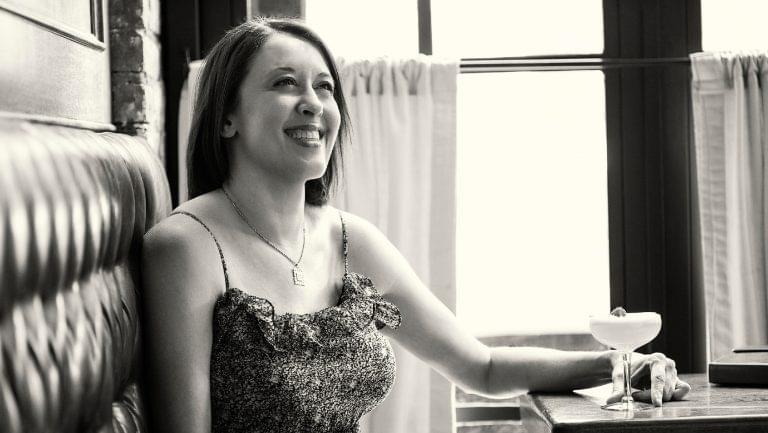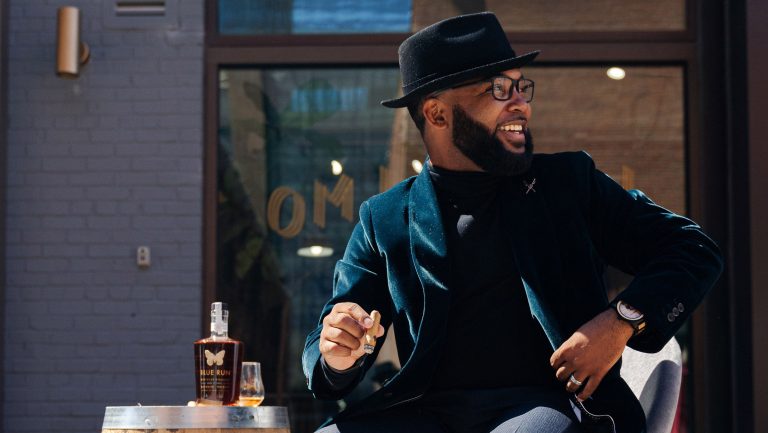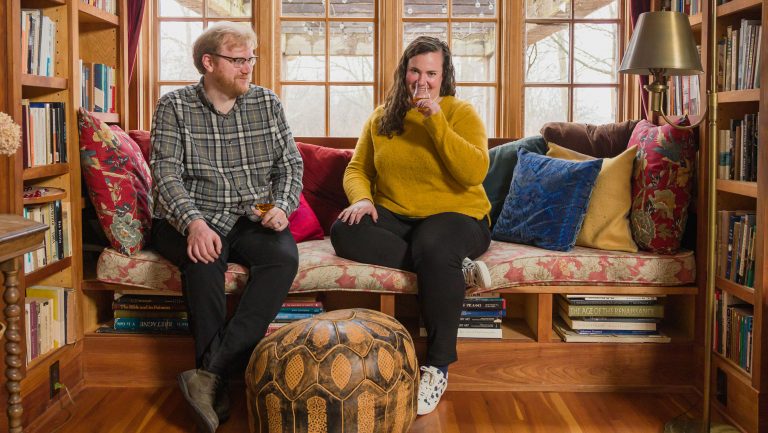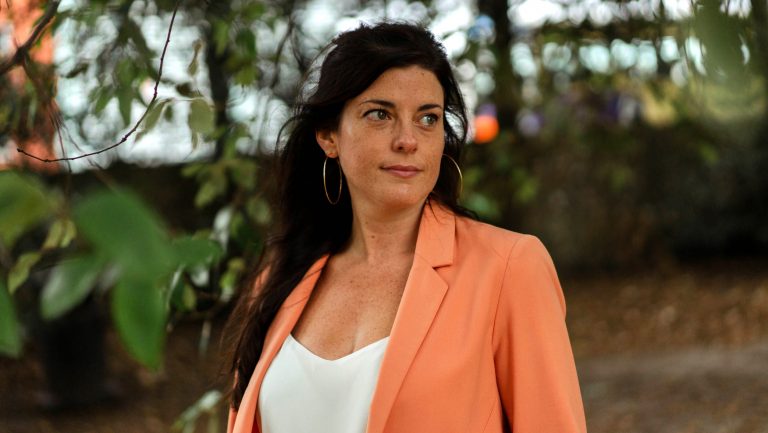It’s a good thing Julie Reiner grew up where she did. Otherwise, New York City might not have had the cocktail revolution it did. Classic drinks, market-driven ingredients, clever infusions and syrups, bars where customers revel in the mixology—blame it all on Hawaii.
“My mom loves to entertain,” says Reiner, who grew up on Oahu, “and there was a revolving door of visitors flying in because, well, it was Hawaii. I was always picking mangoes in our backyard and making margaritas, and I would pass hors d’oeuvres at the parties, so I got that bug early on.”
Hospitality and fresh ingredients—they’re the building blocks of Reiner’s quarter-century career. She evolved her mother’s lessons into a bartending style that helped launch the modern cocktail movement. The founder of Manhattan’s Flatiron Lounge, a silent partner at the Pegu Club, and the co-owner of Brooklyn’s Clover Club and Leyenda, Reiner, 44, boosted the careers of many drink-world players: Ivy Mix and Lynnette Marrero, the co-founders of the female bartending competition Speed Rack; Katie Stipe, who started bar programs at the Vandaag and Grand Army; Guiseppe González, owner of Suffolk Arms; Tim Cooper of Sweetwater Social and 86 Co.; Phil Ward, who opened Death & Co. and owned Mayahuel; Toby Maloney of Chicago’s Violet Hour; Cuffs & Buttons co-founder Chad Solomon; Highland Park brand ambassador Tonia Guffey. The list goes on.

Don’t miss the latest drinks industry news and insights. Sign up for our award-winning newsletters and get insider intel, resources, and trends delivered to your inbox every week.
In the family of modern bar stars, “she’s the top of the tree,” says her business partner Tom Macy. “She literally is the reason I work in the cocktail world”—a sentiment echoed by many.
“She has a good eye for talent,” says Robert O. Simonson, the author of A Proper Drink: The Untold Story of How a Band of Bartenders Saved the Civilized Drinking World. “The people influenced by Julie are many because she hired some of the best, and a lot of them went on to open their own bars.”
That’s quite a footprint for a woman who says she was “just making it up as I went along,” helping to build a scene that, in 2003, was virtually nonexistent. Pioneer, mentor, businesswoman, author, judge, consultant, champion for women in the industry, and, oh yeah, mom Reiner fills a lot of shoes—and she still shows up for her Tuesday shift at Clover Club.
Learning to Hustle
“In the ’90s,” says Dale DeGroff, the author of The Craft of the Cocktail. “I was doing these Cocktail Safari tours of New York neighborhoods. There were slim pickings. Everyone was doing sour mix out of a gun. I popped into C3 in Greenwich Village because I heard there was someone using fresh juice.”
It was Reiner. She’d come to New York from San Francisco, where she’d gone in 1994 after graduating from Florida State University. Reiner had hated Florida, where her family had moved when she was in high school. After multicultural Hawaii, Reiner was so put off by homogenous Orlando that she went back to Oahu for her senior year and supported herself as a cocktail waitress. “Hawaii has a lot of union bartenders, and they were all men,” she says. “Those were bigger money jobs. All the waitresses were women. And those bartenders were mean.”
But though the working conditions were rough, Reiner picked up important skills. “You had to hustle, and it was every person for themself. I became a very good multitasker. And I made great money.”
The financial lesson wasn’t insignificant; it’s been a hallmark of her role as a mentor to younger pros to help them understand how to make a living. “Money in our industry is very wishy-washy,” says Ivy Mix, who first bartended at Reiner’s short-lived Manhattan tiki spot, Lani Kai. “It’s not like everyone says, ‘Hey, we should all charge the same amount for working this event.’” When approached to do outside gigs, Mix would go to her boss for advice. “She’s an open book,” Mix says. “She’d say, ‘Let’s walk through it and figure out what your time is worth.’”
Reiner discovered how lucrative bartending could be when she poured at a beer-and-shot joint during college. The job helped her hone her no-nonsense drive. “Everybody in my dorm would come to my bar and get hammered,” she says. “They’d be pulling each other up and down the hall naked on mattresses. I’d go to my room, lay out all my cash, and smoke a joint. I was like, ‘Have fun, guys. Thanks for your cash.’”
But it was in San Francisco that Reiner realized there could be a career in bartending. Working as a marketer and bored with it, she itched to get back into nightlife. “I was dating this woman who managed a place called the Red Room,” she says. “It had a menu of classic cocktails and an all-female staff.” There, Reiner met Susan Fedroff, now her wife and business partner. And she started bartending again—“There were these gorgeous women behind the bar, and I said, ‘I want to do that.’”
It’s a philosophy Reiner has lived by since: Women belong behind the bar. She brought the belief with her when she and Fedroff moved to New York in 1997, and when the couple later opened the Flatiron Lounge with their friend Michelle Connolly and other partners, Reiner hired equal numbers of men and women to pour drinks. “She gave a lot of people a leg up when the industry was, and still is, pretty male-dominated,” says Simonson. “She’s someone to look up to in that way.”
Katie Stipe’s experience as a Flatiron bartender is reminiscent of Reiner’s own at the Red Room. “Julie would pull shifts,” she says, “Susan would pull bar-backing shifts, and Michelle would bartend, too. They were all strong women, so I had role models.”
In that respect, Reiner’s timing was right. Once the classic cocktail scene took off, “everyone was trying to be Jerry Thomas,” says Mix, “with a moustache and suspenders and arm garters. There really was no room for a woman in that image. But Julie had opened up Flatiron before people thought cocktails had to be that.”
Forging a New Style
Flatiron Lounge was a no-brainer for Reiner. At C3, DeGroff tasted drinks Reiner had dreamed up, like the Hawaiian Iced Tea, made with vodka, mint, and black Liliuokalani tea. “Julie’s early influences in Hawaii made her the master of fresh and tropical,” he says, “using all these tropical flavors with spices.”
DeGroff told reporters about her, the New York Times and New York magazine covered her, and her reputation snowballed. Miffed that she was overshadowing him, C3’s chef had her fired. By then, though, Reiner had bigger ideas. “I said, ‘Let’s open a bar,’” she says, “because clearly this was an untapped market.” Michelle Connolly brought in Zinc Bar’s Alex Kay and Kristina Kossi. “I gave them my press book, and they were like, ‘That’s nice. How much money do you have?’”
It was the start of another series of lessons that Reiner has shared with legions of aspiring bar owners since—including every year at Beverage Alcohol Resource’s prestigious BAR 5-Day master class. “So many people are there because they love bartending,” says Reiner, “but that’s 10 percent of what it takes to actually run a bar. If you don’t understand partnerships and how to read a P&L, and costing, and all of these things, then you’re gonna be at a serious loss. Susan and I come in and talk about that stuff.”
For Tim Cooper, learning under Reiner wasn’t easy, but it was essential. He came to the Flatiron Lounge from the freewheeling New York City bar BED in 2007. “Julie took care of my rough edges right away,” Cooper says. “She was one of the tougher bosses I’ve worked for but also very fair. She wanted things done her way, making sure [I was] following protocol and being a stickler with the cocktails she was implementing.”
Reiner had to be exacting. One of the first establishments to harken to an era of classic cocktails, with an Art Deco bar as a centerpiece and a culinary approach, the Flatiron Lounge was an instant success. Reiner needed her staff to keep up. “She had to become a mentor because there was no one around who knew how to make the drinks she wanted to serve,” says Simonson. “Using jiggers, making fresh syrup, [learning] how to balance a cocktail, when to shake, stir, use bitters—she was learning herself, but the people she was training didn’t know anything.”
Reiner was handcrafting cocktails for crowds accustomed to two-ingredient gun drinks. “She didn’t want to dumb down the drinks, but she had to get them out faster, so she started learning shortcuts,” says Simonson, who credits her for things like cheater bottles—smaller, generic bottles of accent ingredients ingredients that can be positioned within easy reach. “She showed how a craft cocktail bar could be popular and efficient at the same time, and a lot of people took those ideas, and now it’s common.”
Many Flatiron Lounge barkeeps—Lynnette Marrero, Chad Solomon, Toby Maloney, Tim Cooper—went on to consult, teaching the lessons they picked up from Reiner. “Any time I train a staff now,” says Cooper, “there’s the consistency aspect—everyone making their classic the same way, having a system, the same muscle memory and setup. If someone has to jump in your station, that’s huge. Julie’s refined approach has influenced everything I’ve done.”
When her partners found a second location, on Houston Street, Reiner felt Flatiron still needed her behind the bar, so she tapped one of the only other people in New York at the time making drinks like hers: Audrey Saunders. The Pegu Club opened in 2005.
With Saunders’ all-male staff and their highfalutin attitude, Pegu was like the anti-Flatiron. So were other bars that opened on Flatiron’s heels, many of them enamored of the speakeasy vibe at Sasha Petraske’s Milk & Honey, opened in 1999. Reiner was never so precious. She’s never had a door policy.
“Not that exclusive bars are bad,” says Macy, “but Flatiron brought well-made cocktails to everybody”—including Brooklynites. By 2008, when Fedroff and Reiner opened Clover Club, the couple had moved to the borough, where at the time “there was nowhere that I wanted to go that people had put money and thought into,” says Reiner. “I felt it was desperately needed.”
Crafting Cocktails the Reiner Way
Though it took its inspiration from pre-Prohibition cocktail history, Clover Club is made for modern-day Brooklyn. “It’s civilized, with food,” Reiner says. “We wanted to do a classy neighborhood spot that people could come to multiple times a week. We got these enormous bar stools that are really comfortable.”
But Clover Club is more than a neighborhood joint. It was named Tales of the Cocktail’s Best New Cocktail Lounge in the World in 2009 and Tales’ Best American Cocktail Bar and Best High-Volume Bar in 2013, when Reiner was named Best Bar Mentor. The following year, she drew a slew of acclaim: she made Food & Wine’s list of Top 10 Mixologists; was named Wine Enthusiast’s Mixologist of the Year; and received a James Beard Award nomination. With Clover Club, she hit the international stage.
It was at Clover Club that Tom Macy began his career, as a barback. Today he’s head bartender and a partner there and at Leyenda. “Julie is all about promoting from within,” he says, “and letting people grow and strive to [meet] the challenge.”
Ivy Mix can second that. She had been waitressing for Phil Ward at Mayahuel. But Ward, who got his start as a Flatiron barback, wouldn’t let her bartend. Reiner gave Mix a shot at Lani Kai. Later, when Mix couldn’t muster investors for her own bar concept, focused on the South American spirits that are her passion, Reiner partnered with her in a space across the street from Clover Club. Leyenda opened in 2015. “It was hard for me to go from the employee to the coworker,” says Mix. “Julie wasn’t shy. She’d say, ‘Hey, you can’t do that anymore. You can’t just defer.’”
This clear-headed magnanimity is also reflected in Reiner’s 2015 book, The Craft Cocktail Party: Delicious Drinks for Every Occasion. Unlike the ponderous tomes of many other mixologists, Reiner’s book is accessible. “We had had a kid,” she says, “and we were drinking at home more. I don’t infuse for drinks at home. I’m making a Negroni or a daiquiri. I wanted to give people basic knowledge.”
Her recipes are straightforward. She suggests brands; she doesn’t mandate them. Dedicated to her mother, the book is organized by season and occasions for throwing a party, beginning with a summer trip to the farmer’s market for fresh fruit—a testament to her youth.
As rich as her life is in New York, Reiner still misses Hawaii. It’s one reason that she works on hotel bar programs there through her company, Mixtress Consulting. As she’s always done, she focuses on mentorship. Says Richard Elliot, the director of operations at the Andaz Maui at Wailea Resort, “Her biggest impact is helping to train the staff. She spends countless hours [helping them] hone their craft.”
But while she consults there and on other programs—New York’s Hyatt Centric Times Square, Park Hyatt, and Baccarat Hotel; Oahu’s Kahala Hotel—and serves as a judge for competitions from Speed Rack to Diageo World Class Global Finals and Bacardi Legacy, people admire that Reiner is nonetheless willing to work at her own bars. “I know what owner involvement does,” she says. “I like to keep a finger on what’s going on.”
In that and so many other ways, says Mix, Reiner is an industry role model. “She owns bars, she’s a mother, and an out woman with a wife. She did a lot of stuff in her life that hasn’t been easy. But she chose the path less traveled.” And because of that, “you can’t really throw a stone and not hit somebody who’s been affected by Julie. Now we’re adults, living adult lives with families and stable careers in the alcohol world. People have brand work, they have 401(k)’s, and they probably wouldn’t be where they are without Julie.”
Or as her wife, Susan Fedroff, simply puts it: “She’s a total badass.”

Dispatch
Sign up for our award-winning newsletter
Don’t miss the latest drinks industry news and insights—delivered to your inbox every week.
Betsy Andrews is an award-winning journalist and poet. Her latest book is Crowded. Her writing can be found at betsyandrews.contently.com.








